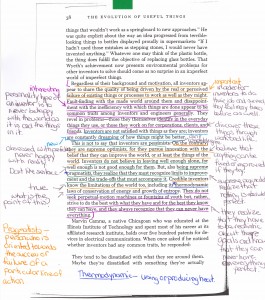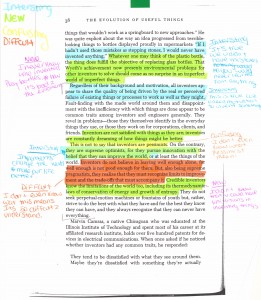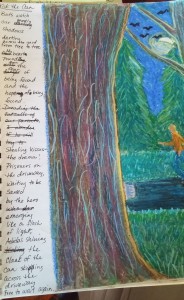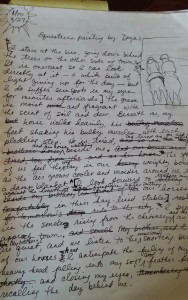- Re-planting in the greenhouse
I have a greenhouse, where I begin plants from seeds. It’s pretty experimental…I try to be courageous and grow new things every year. Some things thrive and some don’t. Once things are growing, I take stock of what is useful. Can I make soup from these tiny eggplants? Are these tomatoes good for sauce? Should I combine a few things for a salad?
The sketches and writing in the pages of our journals are just like the things growing in a greenhouse. We pour our thoughts, and sometimes our hearts, into these pages, collecting our memories and ideas like seeds, forming them into pictures and words like little sprouting plants. When we take the time to really look over what we’ve done, certain topics stand out as stronger and worthy of our attention. So we work on those: we re-write, revise, publish, and share. When someone eats a meal I’ve made from the food in my greenhouse, I feel it was all worth it. Likewise, when I re-work a sketch and some words from my journal into a finished, presentable piece of art and writing, I feel all those entries were valuable.
This is the time of year to reflect on what we’ve done and go forward with a plan. As writers in the classroom, journals can provide the rich soil from which we discover our growing voices.
- Put aside time for your kids to read quietly through their own journals (and do it yourself). What sticks out as something you’d like to spend more time working on?
- Pair your kids in teams of two, so they can read to each other from their journals and begin to hear what others might want to know more about. Give them questions to ask each other that will cause them to stretch their thinking. Teach them to take notes so they are sure to include the information they need.
In the next couple of weeks I will include some examples of revised works from children’s sketch journals. In the meantime have a wonderful winter break!





